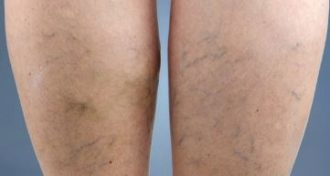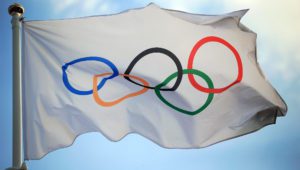Varicose veins are a problem which is getting more and more attention in recent years. These thick bulbous varicose veins or thin purple spider veins are generally treated as a cosmetic issue, although should pain or discomfort arise varicose veins become known as a medical condition. Either way, you can have your varicose veins removed though a safe and minimally invasive procedure known as EVLA with a varicose vein treatment specialist. Still, these varicose veins may be a bit of a concern – as a rower you there is a lot of leg work involved in our sport, so anything affecting the legs is definitely worth knowing about. So how much of a problem are varicose veins and how can you prevent them in rowing?
 Credit wikiHow, Varicose veins
Credit wikiHow, Varicose veins
Why?
Varicose veins are caused by your vein walls and internal valves being weakened as a result of high internal pressure. Once weakened, blood begins to pool, causing even higher pressure and the bulbous veins commonly associated with the condition. There are several different factors which contribute to the development of this condition, including age, gender, lifestyle and your choice of sport. Fortunately rowing is one of the best sports for avoiding varicose veins, though it’s a misconception that being a rower means that you’re naturally going to avoid the condition.
High impact exercises like running and jogging put a lot of pressure on the veins in your legs. Weight training is another exercise which people suffering from varicose veins should be wary of due to the pressure it puts on these already weakened veins. This is made even worse should you ever attempt to hold your breath while doing weights, as this causes the pressure in your veins to build to such high levels that it can cause significant damage to your valves. This is just one of the many reasons you should work on your breathing as you row – the other of course being that your team is going nowhere if you get out of breath.
There are other contributing factors to developing varicose veins, such as your diet and your choice of career. Teachers and nurses, for example, are more at risk due to the long periods of time spent on their feet – even as an avid rower you may start developing varicose veins though other aspects of your life.
 Varicose veins-Prevention Credit: Wikihow
Varicose veins-Prevention Credit: Wikihow
Help
If you’re concerned about varicose veins there are ways you can adapt your training regime to take your venous health into account. Rather than high impact exercises such as jogging and weightlifting, exercises which force your leg muscles to work without adding extra weight should be considered. These exercises include cycling and swimming on top of your standard cardio or circuit training.
If you work out with weights or take part in high impact exercises which could cause blood to pool in your legs, make sure to account for it in your cool down and recovery period. This could be anything from taking up yoga to simply lying on your back with your legs on the wall – the latter is by far the easiest way to help your blood through your veins and back towards your heart. You can also wear compression socks during the more strenuous exercises, though some tend people find these uncomfortable – lying on your back and catching your breath, however, is almost universally accepted as the easiest, most comfortable form of recovery after a long workout. The next time your coxswain catches you on your back, out of breath at the gym, simply tell them you’re looking after your legs!
Conclusion
We use – when rowing 85% of all the muscles in the human body, from toes to neck and finger muscles. In general rowing and erging should be to our benefit. The hydrostatic pressure is almost eliminated by the elevation of the legs when having your leg in the rowing shoe. When sliding forward towards the stretcher a short venous congestion in the lower leg veins arises, caused by the air inhalation with pressure increase in the chest – / abdominal cavity and a bending of the knee joint with pressure of the lower leg veins. With great pressure, at the catch and drive, the movement is then initiated through the calf muscles, the upper body and the arm pull follows with a powerful exhalation. We build pressure on the leg veins almost simultaneously and create a suction effect in the veins due to the negative pressure in the abdominal cavity. Both lead to a strong and rapid blood outflow of the leg veins. The additional load due to the hydrostatic pressure gradient is almost completely eliminated. So here we are actually dealing with muscle building and endurance training, which shows great effects on the leg.
The blog was initiated by Rebecca and edited by Tom




